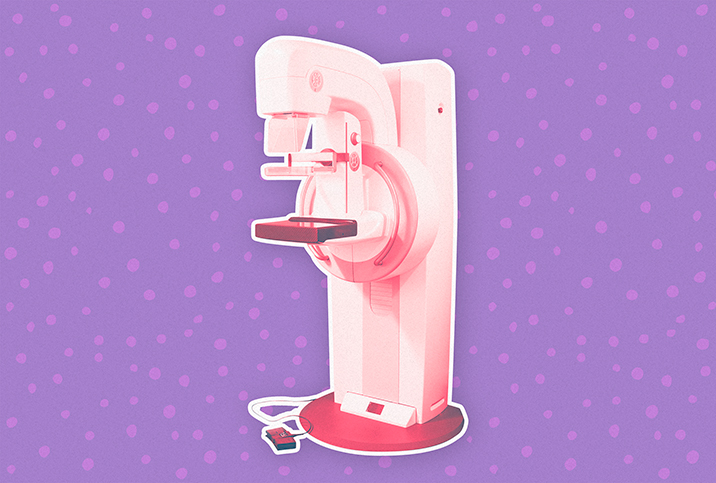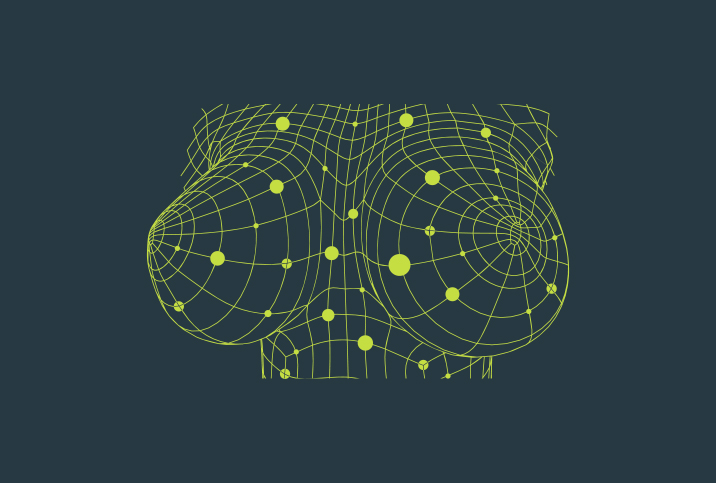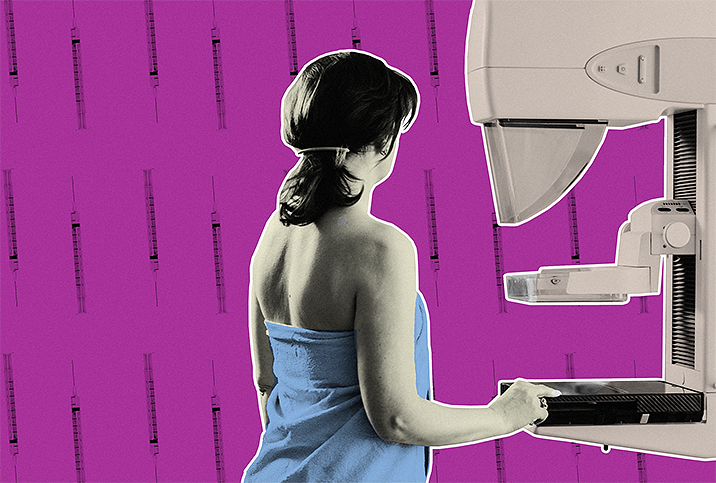Guys, You Need to Know About Mammograms, Too

Breast cancer is one of the leading causes of female mortality, but it should not be forgotten that men are at risk, as well. Or they could be husbands, fathers, brothers, uncles or partners of people who get the disease.
They can play a crucial role in women's health by correctly understanding breast cancer and the procedures—including mammograms—that can lead to early detection.
The more factual their understanding, the more they could encourage testing, which could increase early detection. Unfortunately, mammograms remain a misunderstood procedure among men.
So we asked women's health experts about some of the basic facts everyone—but specifically, guys—should know about mammograms.
Fact #1: Mammograms aren't only for women
One of the most common misconceptions experts hear about the mammogram is it's only a woman's exam. This is false.
Kavita Jackson, M.D., a Baltimore-based emergency physician and breast cancer survivor, offered a professional take on this erroneous belief.
"Although less common, breast cancer in men is typically found in later stages, which are associated with worse outcomes and higher mortality," she explained.
While there are no formal breast cancer screening guidelines for men, research suggests mammograms may help diagnose breast cancer in guys who are at high risk.
Men should understand that a mammogram is not a gendered test, according to Kerry-Anne Perkins, D.O., a New Jersey-based OB-GYN and member of the medical review team for Women's Health Interactive, a women's health site. She stressed "it is not an emasculating situation if a man has to have one himself."
Fact #2: Mammograms are often painless
OK, this one might be patient-dependent, but this belief often stems from the wrong idea that mammograms are invasive. They're simply not.
"To be clear, mammography is simply a type of exam, like an X-ray or a CT scan or an MRI," Perkins clarified. "It's a machine that helps us to find abnormalities and make a diagnosis. That's all."
Mammograms are performed using a specialized X-ray scanner. For female mammograms, a plastic plate supports the breast from underneath; a second plate is then firmly pressed onto the breast from above. These plates flatten and hold the breasts in place while the machine scans them. The process is then repeated, but this time with the plates on the left and right sides of each breast.
However, the belief that mammograms are universally painful is false.
"That really depends on the individual," said Monica Froicu, M.D., Ph.D., the associate director of breast imaging at Geisinger Medical Center in Pittsburgh. "However, most women describe it as just temporary discomfort and not necessarily painful."
Fact #3: Mammograms are extremely safe
Another misconception is that the radiation from a mammogram could cause cancer. This is also false, according to experts and research.
Though mammography machines emit radiation, the dose is small and the risk of harm is low. Recent findings indicate the dose of radiation delivered during mammograms has decreased in the past several decades, while the accuracy in detecting signs of breast cancer has increased, Jackson explained. Additionally, the increased use of 3D mammography has meant a decreased need for additional images, which helps decrease the amount of radiation exposure.
The amount of radiation from a 2D digital mammogram results in a lifetime risk of 1.3 cases per 100,000 women who were age 40 at exposure, and less than 1 case per 1 million women age 80 at exposure, according to the U.S. National Academy of Sciences Biologic Effects of Ionizing Radiation (BEIR) VII Group report. These studies assume a cumulative effect of radiation exposure, which means annual screening mammograms performed on women ages 40 to 80 are associated with a lifetime attributable risk of fatal breast cancers in 20 to 25 cases per 100,000 women screened, according to Princeton Radiology.
Fact #4: Mammograms are usually accurate
While mammograms aren't 100 percent perfect, they are still the best tool to reduce the mortality of breast cancer.
Froicu explained that mammograms can deliver a small percentage of false negatives and her practice calls back 10 percent to 15 percent of patients. However, it remains an effective procedure for early detection.
"We detect three to four cancers per 1,000 mammograms," Froicu said. "A 3D mammogram has a higher cancer detection rate than a 2D mammogram with a slightly higher dose of radiation, but chances for callbacks are much smaller with a 3D screening."
Fact #5: Mammograms are not only for older women
The generalization that mammograms are only for women of a certain age is incorrect. U.S. screening guidelines recommend women start getting routine mammogram screenings when they reach age 40 or 50—the American Cancer Society says 45—and continue every one to two years until they reach 75. However, this applies only to women with no history of cancer.
"While mammograms are usually recommended for women in their 40s, it is not unusual to have them in their 20s or 30s," Perkins said. "For these age groups, they're likely recommended if there is a high cancer risk or if a lump or other abnormality is felt during a breast examination."
Therefore, the timing and frequency of mammograms should be decided following a thoughtful discussion with a healthcare provider, not necessarily based on age.
Fact #6: An absence of family history doesn't mean a woman should shun mammograms
Froicu explained that 85 percent of women with breast cancer have no family history of it.
The earlier breast cancer is detected, the better the survival rate.
Fact #7: Breast cancer can develop fairly quickly, so annual mammograms are not unusual
According to Froicu, cancer can develop in just one year, so it's important to be screened annually.
According to the ACS, women older than age 45 should have a mammogram each year, regardless of their family history. Even if it is not recommended by a doctor or scheduled, women should self-refer.
Fact #8: It is not only women who benefit from mammograms
Another false idea about mammograms is that only women benefit from the procedure.
Perkins pointed out that men, even though they account for less than 1 percent of breast cancer diagnoses, can benefit from mammograms.
But who's at risk?
The answer is men who have a family history of breast cancer, those who have high estrogen levels and those who were exposed to radiation. A mammogram may be recommended if a man belongs to such a risk group.
Why is it important for men to learn about mammograms?
Men contribute significantly to the fight against breast cancer deaths by correctly understanding mammograms, according to Jackson, because it all boils down to providing support for a partner.
They have the potential to contribute by bringing up any abnormalities they may notice in their partner's breasts, such as redness, tenderness, lumpiness or abnormal discharge. They can also discuss mammogram screening with their loved ones to remind and encourage them to be screened for breast cancer.
What's more, men can remind partners of their screenings each year. Most importantly, they can offer moral support once it's time for the test.


















